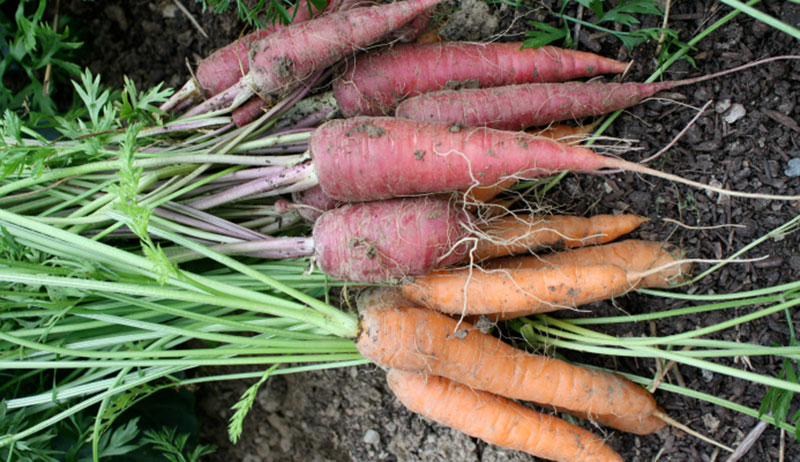
Growing carrots in less-than-perfect garden soil is a challenge. If the roots hit even a tiny pebble, they’ll fork or grow into a twisted, gnarled form. Properly preparing a carrot bed can be a real chore that requires carefully tilling the soil to break up any large clods and screening it to remove stones and other debris, but there’s a simple solution to this problem: Grow carrots in containers.
Why Grow Carrots In Containers
Aside from eliminating the need for careful seed-bed preparation, there are many other reasons to grow carrots in containers.
- Carrots are prone to damage from several soil-borne pests, including wireworms, carrot root maggots and flea beetle larvae. When you grow carrots in containers, the roots are less likely to come into contact with these pests. Plus, it’s easy to toss a light layer of floating row cover over the containerized plants to keep adult root maggot flies from laying eggs on them.
- Carrots are a favorite of munching rabbits, groundhogs and deer. When growing carrots in pots, you can easily protect them from these critters by locating the containers close to your house or by fencing the pot with a small cylinder of chickenwire fencing. If you choose a tall enough container, the plants will be out of the reach of rabbits and groundhogs, though the latter can climb. Pick a smooth-sided, glazed container to make climbing up the side of the pot difficult.
- You can more carefully monitor the nutrients the plants receive. Like all root crops, carrots use a lot of phosphorous during their growth. Because phosphorous is fairly immobile in the soil, it needs to be close to the root zone of the plant. When growing in containers, you can easily provide your carrots with a burst of phosphorous via supplemental organic granular or liquid fertilizers if necessary.
- If you fill your container with high-quality, organic potting soil, mixed 50/50 with finely screened compost, your carrots will grow strong, healthy, and straight without any need to prepare the soil.
Step 1: Select Your Container
If you plan to grow full-sized carrots, pick a pot that’s at least 12 inches deep and has a drainage hole. Because carrots should be grown at a spacing of about an inch apart, the wider the pot, the more carrots you can grow. For smaller, shorter carrots, you won’t need a pot quite as deep, but again, the wider the pot’s diameter, the more carrots you can grow.
Step 2: Select Your Varieties
Any carrot can be grown in containers, but by picking short or round cultivars, you’ll be able to grow more carrots in less space. Some of my favorite diminutive carrots are Romeo, Caracas, Oxheart, Parisienne, Thumbelina, Little Finger and Short ‘n’ Sweet.
Step 3: Sow The Seeds
Just as you do in the garden, sow carrot seeds about 1/4 to 1/2 inch apart. Because carrot seeds can take up to three weeks to germinate, you’ll have to be patient before you see them sprout. Once the seedlings are about an inch tall, thin them to a spacing of 1 inch. This gives each root plenty of room to grow.
Step 4: Care For Your Carrots
When growing carrots in containers, there’s nothing more important than making sure they receive adequate moisture. Water them daily during hot weather or when rainfall is inadequate. Make sure the container has a drainage hole and always allow excess irrigation water to run out; do not let water sit in a saucer beneath the plant or the roots will be constantly waterlogged and could develop rot.
Step 5: Harvest Your Container-Grown Carrots
Carrots can be harvested in an immature “baby” stage at any time, or you can allow them to develop to their full size. Do not allow mature roots to sit in the pot for too long, or they’ll grow woody and the roots may crack. Harvest your carrots all at once, or just pull a few a day and use them as needed.
Grow carrots in containers for an excellent harvest of perfectly strait, delicious roots.




